#Otello Martelli
Explore tagged Tumblr posts
Photo




La dolce vita (1960)
34 notes
·
View notes
Text

Marcello Mastroianni in La Dolce Vita (Federico Fellini, 1960)
Cast: Marcello Mastroianni, Anita Ekberg, Anouk Aimee, Yvonne Furneaux, Magali Noël, Alain Cuny, Annibale Ninchi, Walter Santesso, Valeria Ciangottini, Riccardo Garroni, Alain Dijon, Lex Barker, Jacques Sernas, Nadia Gray. Screenplay: Federico Fellini, Ennio Flaiano, Tullio Pinelli, Brunello Rondi. Cinematography: Otello Martelli. Production design: Piero Gherardi. Film editing: Leo Catozzo. Music: Nino Rota.
La Dolce Vita was among the celebrated international films that challenged Hollywood's hegemony in 1960, including René Clément's Purple Noon, Jean-Luc Godard's Breathless, Michelangelo Antonioni's L'Avventura, Luchino Visconti's Rocco and His Brothers, and Yasujiro Ozu's Late Autumn. It established Federico Fellini as one of the world's most important filmmakers. I was very young when I first saw it, and it dazzled me with its nose-thumbing satire of a shallow, hedonistic culture. I remember being impressed particularly by the scene at the home of Steiner (Alain Cuny), the ill-fated intellectual whose life and ideas also made their mark on Marcello Rubini (Marcello Mastroianni), Fellini's protagonist, a journalist with ambitions to become a "serious" writer. What I missed at that time was that Steiner was as much a target of satire as the movie stars, aristocrats, and hucksters that swarm around Marcello's Rome. Steiner's soiree is as empty and sterile, as decadent in its own way as the scenes of boozing and party-hopping and religious mania. But at least there's an energy to those scenes that keeps the film alive. Even though Steiner's story is tragic, La Dolce Vita is a profoundly anti-intellectual movie. And of all the films I just named, despite its technical prowess, it seems to me the least impressive, the one most touched by the passage of time.
1 note
·
View note
Text
LA DOLCE VITA: SNAPSHOTS
Manipulated high contrast stills from Federico Fellini’s 1960 international masterpiece of cinema. The selected images with subtitles attempt to “freeze” and depict the timeless message of the film and screenplay. Original Cinematographer Otello Martelli and screenplay by Federico Fellini, Pier Paolo Pasolini and others.
#la dolce vita#federico fellini#italian cinema#1960s#black and white photography#artwork#photography
0 notes
Text







"Where there is pain, let me bring joy, and where there is despair, hope."
The Flowers of St. Francis (1950) Directed by Roberto Rossellini Cinematography by Otello Martelli
39 notes
·
View notes
Photo

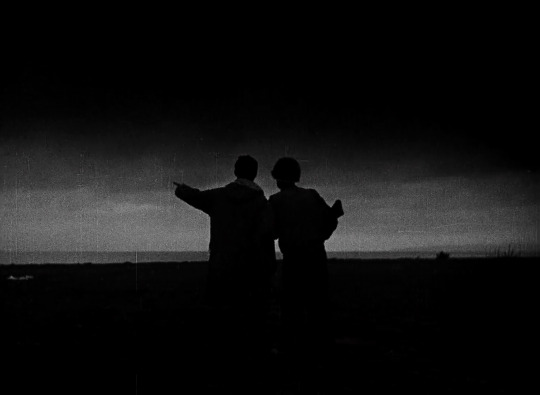

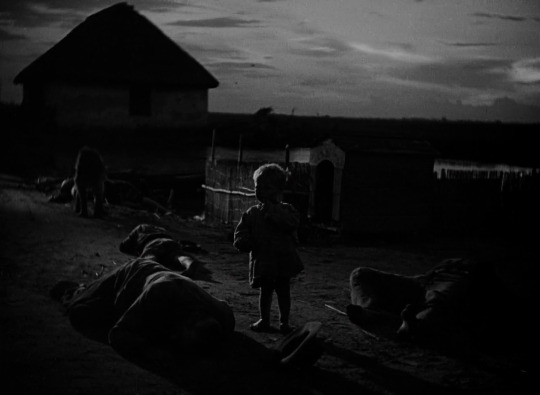

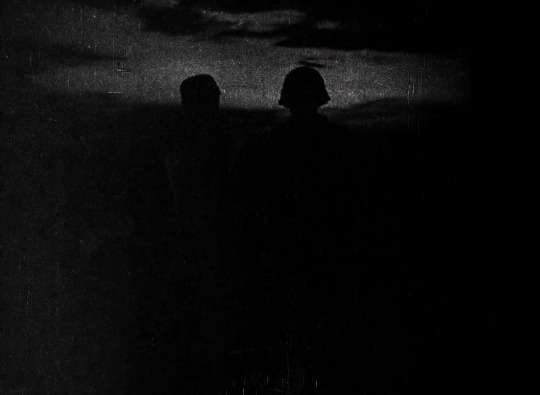

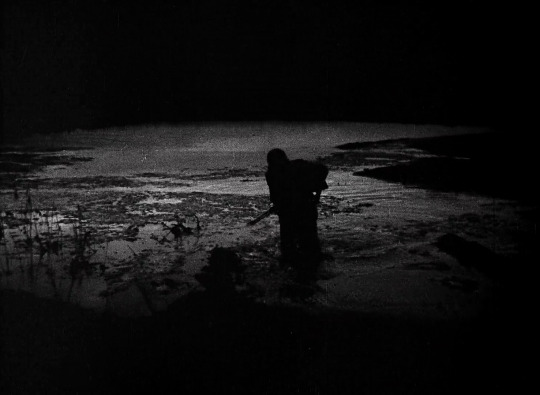
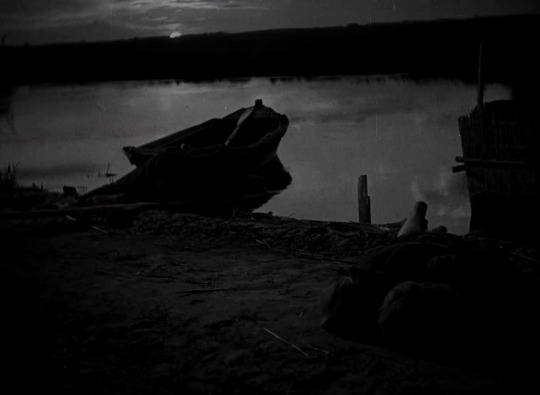

Paisan (Roberto Rossellini, 1946).
254 notes
·
View notes
Photo

Federico Fellini, Le Notti di Cabiria, 1957
#film#federico fellini#le notti di cabiria#nights of cabiria#aldo tonti#otello martelli#giulietta masina#italian cinema#italian neorealism#neorealism#50s#film still
4 notes
·
View notes
Photo

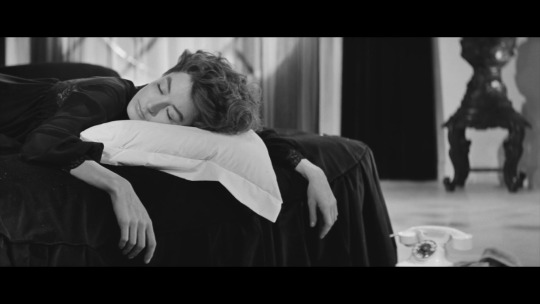
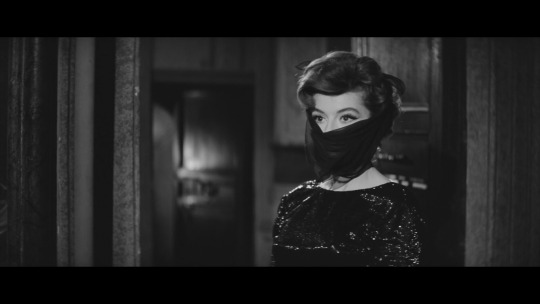
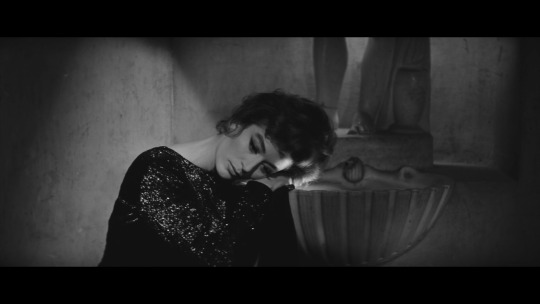
La Dolce Vita. Federico Fellini. 1960
#la dolce vita#federico fellini#anouk aimée#1960#1960s#italian cinema#otello martelli#cinematography#black and white#cinema#film#movies#art
71 notes
·
View notes
Photo






stromboli (it/usa, rosselini 50)
46 notes
·
View notes
Photo

Movie #64 of 2020: Paisan
“If you fall asleep, I’ll steal your shoes.”
#paisan#roberto rossellini#italian#english#drama#war#sergio amidei#federico fellini#klaus mann#marcello pagliero#alfred hayes#rod e. geiger#vasco pratolini#renzo rossellini#otello martelli#eraldo da roma#german#sicilian#35mm#1946#64#great
7 notes
·
View notes
Photo

- I am ignorant, but I read books. You won't believe it, everything is useful... this pebble for instance. - Which one? - Anyone. It is useful. - What for? - For... I don't know. If I knew I'd be the Almighty, who knows all. When you are born and when you die... Who knows? I don't know for what this pebble is useful but it must be useful. For if its useless, everything is useless. So are the stars!
La strada, Federico Fellini (1954)
#Federico Fellini#Tullio Pinelli#Anthony Quinn#Giulietta Masina#Richard Basehart#Aldo Silvani#Marcella Rovere#Livia Venturini#Otello Martelli#Nino Rota#Leo Catozzo#1954
7 notes
·
View notes
Photo




la dolce vita (1960) dir. federico fellini
it’s like a peaceful jungle. it’s easy to hide in.
drama | marcello mastroianni, anita ekberg, anouk aimée
#la dolce vita#federico fellini#fav#60s#Black and White#Marcello Mastroianni#anita ekberg#Anouk Aimée#yvonne furneaux#magali noël#alain cuny#annibale ninchi#walter santesso#ida galli#nico#otello martelli
271 notes
·
View notes
Photo










La dolce vita (1960)
#film#la dolce vita#fellini#mastroianni#Anita Ekberg#Anouk Aimée#Yvonne Furneaux#Magali Noël#Alain Cuny#Otello Martelli
27 notes
·
View notes
Text

Nazario Gerardi in The Flowers of St. Francis (Roberto Rossellini, 1950)
Cast: Nazario Gerardi, Severino Pisacane, Aldo Fabrizi. Screenplay: Roberto Rossellini, Federico Fellini, Félix Morilón, Antonio Lisandrini. Cinematography: Otello Martelli. Production design: Virgilio Marchi. Film editing: Jolanda Benvenuti. Music: Renzo Rossellini.
After his great Neo-Realist films Rome, Open City (1945) and Paisan (1946), and just as he was beginning his relationship with Ingrid Bergman, Rossellini made the sweet-natured The Flowers of St. Francis, which combines some of his Neo-Realism (the use of non-professional actors) with some of the moral questioning he does in the four Bergman films, especially Europe '51 (1952). Based on two 14th-century books that retold legends of the life of St. Francis and his followers, The Flowers of St. Francis consists of a prologue and nine episodes. The actors, who were Franciscan monks, are not credited, although Francis was played by Brother Nazario Gerardi and the key role of Brother Ginepro by Brother Severino Pisacane. The only professional actor in the film is Aldo Fabrizi, who had worked with Rossellini in Rome, Open City. Fabrizi is the monstrous tyrant Nicolaio, who torments Ginepro until he is won over by the monk's gentle endurance of all the ills inflicted on him -- at one point, Ginepro is used as a human jump rope, then dragged around Nicolaio's camp behind a horse. The title of the film in Italian is Francesco, Giullare di Dio, meaning "God's jester," and the moral lesson constantly taught in the film is that of self-abasement to the point of ridicule. In a key episode, Francis and another friar go in search of perfect happiness. They find it when they go to the house of a man who repeatedly refuses their plea for alms until he finally beats them and kicks them downstairs. Then Francis explains that true happiness is to suffer in the name of Christ, a moral lesson not unlike the one learned by Irene Girard (Bergman) in Europe '51, where it's expressed in more secular terms. The screenplay was written in collaboration with Federico Fellini with consultation from two Roman Catholic priests, though the film is much lighter in tone than that suggests.
1 note
·
View note
Photo

La dolce vita / Des femmes en maillot de bain saluent la descente de Jésus en hélicoptère.
#Cinéma#La Dolce vita#Federico Fellini#Otello Martelli#1960#Marcello Mastroianni#Anita Ekberg#Anouk Aimée#Yvonne Furneaux#Magali Noël#Alain Cuny#Annibale Ninchi#Walter Santesso#Valeria Ciangottini#Nico
0 notes
Text
135 planos que harán que recuperes la fe en el cine
youtube
Un maravilloso vídeo ensayo de hace diez años que en su momento se hizo viral. En el verano de 2012, Flavorwire solicitó a sus lectores que sugirieran aquellas películas que consideraban eran las mejores de la historia del cine. El resultado, un montaje que la revista de cultura editó con los títulos propuestos por sus lectores y que rinde un hermoso homenaje al séptimo arte. Si eres amante del cine, seguro que disfrutarás de los magníficos ocho minutos que dura el montaje de Flavorwire. Las películas de las que se han extraído los planos, en orden de aparición:
Man with a Movie Camera (Mikhail Kaufman), The Assassination of Jesse James by the Coward Robert Ford (Roger Deakins), Baraka (Ron Fricke), Koyaanisqatsi (Ron Fricke), Days of Heaven (Nestor Almendros), Akira Kurosawa’s Dreams (Takao Saito, Shoji Ueda), What Dreams May Come (Eduardo Serra), Legends of the Fall (John Toll), Lawrence of Arabia (Freddie Young), El Topo (Rafael Corkidi), La Dolce Vita (Otello Martelli), The Tree of Life (Emmanuel Lubezki), Daughters of the Dust (Arthur Jafa), Chinatown (John A. Alonzo), Hero (Christopher Doyle), Kagemusha (Takao Saito, Shoji Ueda), The Night of the Hunter (Stanley Cortez), Ugetsu (Kazuo Miyagawa), Songs from the Second Floor (Istvan Borbas, Jesper Klevenas, Robert Komarek), The Black Stallion (Caleb Deschanel), Vertigo (Robert Burks), Manhattan (Gordon Willis), Apocalypse Now (Vittorio Storaro), Lovers of the Arctic Circle (Gonzalo F. Berridi), The Duellists (Frank Tidy), Powaqqatsi (Graham Berry, Leonidas Zourdoumis), Ran (Asakazu Nakai, Takao Saito, Shoji Ueda), Bombay Beach (Alma Har’el), 2001: A Space Odyssey (Geoffrey Unsworth), The Thin Red Line (John Toll), Cave of Forgotten Dreams (Peter Zeitlinger), The New World (Emmanuel Lubezki), Solaris (Vadim Yusov), The Diving Bell and the Butterfly (Janusz Kaminksi), I Am Love (Yorick Le Saux), A Matter of Life and Death (Jack Cardiff), Onibaba (Kiyomi Kuroda), Blue Velvet (Frederick Elmes), No Country for Old Men (Roger Deakins), I Am Cuba (Sergei Urusevsky), The Fountain (Matthew Libatique), There Will be Blood (Robert Elswitt), The Human Condition (Yoshio Miyajima), The Proposition (Benoit Delhomme), Raise the Red Lantern (Lun Yang, Fei Zhao), The Godfather Part II (Gordon Willis), 2046 (Christopher Doyle, Pung-Leung Kwan), Beauty and the Beast (Henri Alekan), Melancholia, (Manuel Alberto Claro), Road to Perdition (Conrad L. Hall), Alexander Nevsky (Eduard Tisse), Sunrise (Charles Rosher, Karl Struss), Blade Runner (Jordan Cronenweth), Citizen Kane (Gregg Toland), House of Flying Daggers (Xiaoding Zhao), Wings of Desire (Henri Alekan), Atonement (Seamus McGarvey), The Last Emperor (Vittorio Storaro), Before Night Falls (Xavier Perez Grobet, Guillermo Rosas), The Last Picture Show (Robert Surtees), The Red Shoes (Jack Cardiff), Down by Law (Robby Müller), Amelie (Bruno Delbonnel), Chungking Express (Christopher Doyle, Wai-keung Lau), Children of Men (Emmanuel Lubezki), Black Orpheus (Jean Bourgoin), The Leopard (Giuseppe Rotunno), The Age of Innocence (Michael Ballhaus), Perfume: The Story of a Murderer (Frank Griebe), Raging Bull (Michael Chapman), The Fall (Colin Watkinson), The Pillow Book (Sacha Vierny), Martha Marcy May Marlene (Jody Lee Lipes), Nosferatu the Vampyre (Jorg Schmidt-Reitwein), The Third Man (Robert Krasker), Good Night and Good Luck (Robert Elswitt), The Scarlet Empress (Bert Glennon), The Man Who Wasn’t There (Roger Deakins), Talk to Her (Javier Aguirresarobe), In The Mood for Love (Christopher Doyle, Pung-Leung Kwan, Ping Bin Lee), The Man Who Cried (Sacha Vierny), Santa Sangre (Daniele Nannuzzi), The Passion of Joan of Arc (Rudolph Maté), In Cold Blood (Conrad L. Hall), 8 ½ (Gianni Di Venanzo), Brazil (Roger Pratt).
_________________ Fuente: Flavorwire.
6 notes
·
View notes
Text
Michelina, Madre ciociara: una biografia per immagini
di Maria Carla Cassarini
--- Con una “nota di Gianni Berengo Gardin”, una testimonianza dell’autore, la presentazione di Pippo Pappalardo e la curatela di Daniele Baldassarre è stato pubblicato in 300 esemplari il volume fotografico Michelina Retrosi - Storia di una Madre ciociara (1919-2020) di Antonio Rossi.

«100 anni sono molti da vivere e da raccontare, ma ancora oggi, Lei con la sua bella faccia ce li fa scorrere con il solito ardore di sempre» (Gianni Berengo Gardin)
La carriera del fotografo Antonio Rossi, nato ad Alatri, in provincia di Frosinone, abbraccia mezzo secolo. Di lui si rammentano oltre a un libro sulla sua città natale in collaborazione con Pier Enrico Ferri, l’organizzazione di vari eventi fotografici, un reportage di Gianni Berengo Gardin, nonché il catalogo della mostra Sette giorni nella città dei Ciclopi. Ora è la volta di un volume monografico; un libro che rivela nello stesso tempo una corrispondenza affettiva di particolare intensità tra un figlio e sua madre. Perché, come recita il titolo, si tratta della storia di una madre che si sviluppa attraverso il “pedinamento” fotografico del figlio - per evocare un concetto più volte ribadito di Cesare Zavattini.

Storia neorealista, dunque, si potrebbe dire. Ma come rendere sul piano iconografico un rapporto parentale o amicale, così che quel ritratto di donna diventi il ritratto di un’amica, una sorella, una moglie, una madre, senza che titoli o didascalie intervengano a dare spiegazioni? Come raccontare la storia di una madre con la macchina fotografica, in modo tale che ogni scatto diventi il fotogramma di un ipotetico lungometraggio che ne ripercorra la vita: un fotogramma emblematico della sua esistenza? È il problema che Antonio Rossi deve essersi posto dopo che l’amico Arturo Zavattini, considerando le sue stampe fotografiche appena ritirate dal laboratorio, gli aveva consigliato: «Lascia perdere tutte le altre fotografie e concentrati su tua madre, ha un’espressività unica».

Tornando a casa al termine di quell’incontro, Antonio Rossi forse andava rimuginando le osservazioni di chi negli anni Cinquanta al seguito di Ernesto de Martino aveva conosciuto e fotografato donne e madri della Lucania, cogliendone nei suoi scatti le fatiche quotidiane per sopravvivere a una miseria che, nel secondo dopoguerra, non aveva ancora conosciuto la “ricostruzione”. Non era il caso di trascurare il parere di un fotografo e operatore cinematografico, che aveva alle spalle una consolidata esperienza trascorsa anche come aiuto di Otello Martelli, fatta inoltre di relazioni con celebri maestri come Paul Strand o, in tempi più recenti, con Gianni Berengo Gardin. I libri delle sue raccolte fotografiche (Arturo Zavattini fotografo in Lucania, Passeggiata napoletana, AZ-Arturo Zavattini fotografo - viaggi e cinema (1950-1960), Zavattini & Zavattini - Cesare nelle fotografie di Arturo) avrebbero tratto alla luce solo una parte del patrimonio nascosto nel suo archivio.

Così Antonio si apprestò a seguire l’indicazione dell’amico: «Da quel giorno non ho fatto altro che fotografare mia Madre e se ora ho una vasta documentazione fotografica lo devo soprattutto ad Arturo Zavattini» (Da: A. Rossi, Michelina Retrosi - Storia di una Madre ciociara, tav. IX). Una Madre, si badi, con la lettera maiuscola, come la designa l’autore, quasi a conferirle il carisma della maternità elevandola affettivamente ad assumere il ruolo della Madre terrena per eccellenza, ma senza enfasi di sorta. “Concentrarsi” su quella Madre già anziana, significava ricavare da quel volto non solo le pieghe del suo carattere, ma anche i segni del suo vissuto e la stessa rimembranza di quel vissuto, lasciandola percepire attraverso il raro accenno diun sorriso o, più spesso, un’ombra nello sguardo. Passo dopo passo, aggiungendo ai primi e primissimi piani o ai piani a figura intera elementi indispensabili a lasciar cogliere tratti della personalità di Michelina e del suo lungo percorso di vita.

Attraverso una successione di immagini come tante tessere di una storia, disposte secondo una scansione temporale che va dal 1977 al 2020, capitoli di un romanzo, come si diceva, dall’impronta neorealista, che potrebbero già per sé costituire una narrazione autonoma, ecco farsi visibile il rapporto esistente tra l’uomo che fotografa e quella donna, avvicinata fino alla persecuzione dall’obiettivo, divenuto l’occhio del figlio. Un occhio che la indaga e la racconta. Così che la vediamo ora alle prese con i lavori rurali, ora intenta alle faccende domestiche, ora assorta nel riandare a un passato con una vena di nostalgia o di rimpianto per chi non c’è più. Come non pensare poi alla foto che ritrae Michelina mentre lavora a maglia tra gli attrezzi e gli utensili della sua vitadi contadina, sullo sfondo di un muro dall’intonaco sbrecciato, e che l’autore ha scelto come immagine di copertina? O mentre si cimenta a pizzicare le corde di un vecchio liuto o prega, china davanti alla reliquia del santo o ancora, seduta sulla soglia della porta con la cesta di vimini in grembo, dietro la cassa della legna e vecchie tavole appoggiate al muro di casa, si perde con lo sguardo buio in una lontananza senza confini? Tutto intorno a lei vive la sua presenza e la descrive. Quasi a seguire la lezione di Paul Strand, che Rossi sembra come avere interiorizzato e fatta propria.

Scrive John Berger a proposito di un ritratto di donna messicana eseguita dal grande fotografo americano: «Sulla testa e sulle spalle ha uno scialle di lana e in grembo una vecchia cesta intrecciata. La gonna è rattoppata e il muro dietro di lei è malandato. Nella foto, l’unica superficie intatta è quella del suo viso. Ancora una volta, le superfici che leggiamo con i nostri occhi diventano l’autentica e ruvida trama della sua vita quotidiana; ancora una volta la fotografia è il quadro della sua esistenza» (John Berger, Sul guardare, 1980; trad. di Maria Nadotti, Il Saggiatore, Milano 2017, p. 69). E se gli scatti raccolti in questo volume, non a caso con il titolo La sequenza fotografica, scorressero in modo rapido nel nostro immaginario - giochi che bambini ricchi d’inventiva facevano a scuola per simulare il movimento dei personaggi disegnati su artigianali quaderni di foglietti (prove infantili di cartoni animati) -, ne risulterebbe una sorta di film-documentario.

Una pellicola la cui protagonista non solo parla di sé al presente, seguita dal mattino alla sera in tutte le sue occupazioni quotidiane, compresi gli svaghi e la cura della persona, ma ci rivela con il suo passato l’apertura a un mondo futuro, mentre al contempo offre uno spiraglio sulle tradizioni di un ambiente rurale nella provincia italiana, quello della cosiddetta Ciociaria a cavallo tra il secolo scorso e il presente. 101 anni di vita, fermati e ricapitolati dalla macchina fotografica per quarantatré anni. Attraverso ogni fotografia si coglie il temperamento di una donna forte e consapevole di sé, un carattere contadino, provato ma non abbattuto dalle intemperie della vita, piuttosto rafforzato e indurito come un campo tartassato dalla grandine e arso dal sole cocente (un’allusione a vecchie battaglie politiche il ritratto di lei con il cappello di carta fabbricato con la prima pagina de «L’Unità», mentre brandisce la pala del forno con aria di riscossa?). Donna e madre rappresentata nella sua inesausta attività tra il podere e la casa, tra il forno e i fornelli, o ad attingere acqua in una rievocazione d’altri tempi. Talvolta una sorta di flashback, che si coglie nella direzione di uno sguardo, riconduce alla sua giovinezza, fissata in un bel ritratto di ragazza; talaltra sono le tradizioni contadine che sopravvivono tra i più anziani a far da contorno alla sua presenza: la cottura del pane, la raccolta dei ceci, la pulitura delle olive, ma anche la benedizione contro il malocchio e la recita del rosario. Intanto vengono avanti i personaggi che hanno arricchito la sua esistenza, condividendone il tracciato, come le sue amiche, o alimentando la sua speranza nella vita che continua e cambia proiettandosi nel futuro, come il nipote dipochi mesi o gli altri già cresciuti, che le fanno compagnia. Si potrebbero percorrere queste immagini a ritroso partendo dal fotomontaggio finale delle due Madri, l’una, quella celeste, quasi ad accogliere l’altra, immersa in un sonno interminabile di preghiera. E allora le memorie di madre e figlio si incrociano in un riandando fatto di sguardi perduti nel passato.
Riflette Pippo Pappalardo, redattore della rivista «Gente di fotografia», nella sua prefazione al libro: «Un filo bianco come i suoi capelli, come una traccia di cucito, collega, intanto, la sequenza fotografica con il ritmo della preghiera, come grani di rosario.

Tutto appare privo di enfasi, tutto è intriso di umiltà. Eppure questo filo è stato la nobiltà della vecchia madre; un filo lavorato con orgoglio, come sempre sono stati lavorati i suoi giorni vissuti. Giorni vissuti tessendo la trama delle emozioni tra le preghiere e le speranze, oltre le paure, oltre le incertezze. Ora il suo volto è nascosto dai fili prudenziali di una garza. Proprio lei nata ai tempi della “spagnola” - di cui fotograficamente non ha memoria -, non avrà ricordo del Covid-19 perché anche la memoria è collegata al tempo, alla sua materia, alla sua mater». Un libro, dunque, che va al di là di una bella raccolta fotografica per immergersi nel sentiero della memoria e farsi testimonianza di un amore che perdura nel tempo.
1 note
·
View note